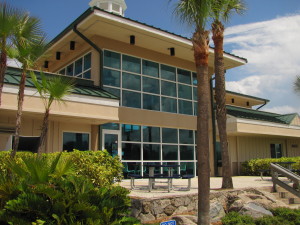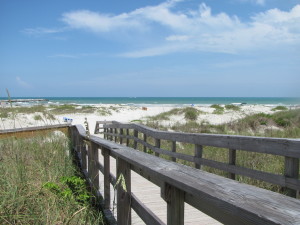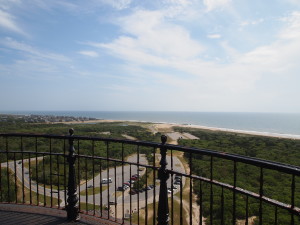Hey everyone, hope you doing well these days! Spring is arriving soon and then before you know it it will be summer! Growing up in central Virginia the Outer Banks was a short drive for some summer family fun.
The Outer Banks is a 200-mile long string of narrow barrier islands off the coast of North Carolina and a small portion of Virginia, beginning in the southeastern corner of Virginia Beach on the east coast of the United States. They cover most of the North Carolina coastline, separating the Currituck Sound, Albemarle Sound, and Pamlico Sound from the Atlantic Ocean.
My family unusually stayed in Kill Devil Hills or Nags Head, NC. Two towns that aren’t that large but draw very large crowds in the summer. Most of the Outer Banks offers Cottages that are for rent for a weekend in the off season or a week or more in the summer. It also offers camp grounds , Condos and hotels if you don’t want to spend the money for a cottage. You have 5 classified areas when doing a search for cottages: Ocean Front, Ocean Side, Between the Highways, Sound Side and Sound Front.
Ocean Front- these cottages are going to be pricey in the summer time because most offer beach access and are very large, but if you have a big group or big family they could be very affordable when you split the cost between the group and they offer lots of space to spread out.
Ocean Side- with these cottages you most likely will still have a view of the ocean and it is just a short walk across the road to find a beach access point. Still pricey but worth it if you want to be close to the beach and have a partial view.
Between the Highways- there are two roads that go through the northern part of OBX through Kill Devil Hills and Nags Head, you have the beach road (that runs along the beach and offers some shops but mostly cottages and hotels) then you have the main road through the center of the island that offers your main shops and outlets and restaurants and the like. The cottages here are affordable and are still just a short walk or drive to the beach.
Sound Side- these cottages are on the west side of the main road through the island, they offer some sound views and are also very affordable.
Sound Front- the cottages along the sound offers sound views and most offer access to the sound via a dock or ladder and some community’s have private beach access that you can use if you stay in the community. They are a little bit higher than sound side cottages but cheaper than beach front but still offer great views( these cottages you can get a great sunset view)
The fall of the year still isn’t that bad of weather and you can still enjoy the beach with cheaper prices for cottages and hotels.
Several rental companies are located on the outer banks and offer different cottages to you some even offer condos.
Farther down the coast you can find quiet towns like Hatteras and a short ferry ride to Ocracoke Island also a small quite town and you might even see some wild horses on the drive! Ocracoke Island offers beautiful beaches and small shops. Also it was a hot spot for pirates like Edward Teach you might know him better by the name of Black Beard!
No matter where you stay at on the outer banks your sure to have a good time!
Here is more information regarding the outer banks and it’s towns from Wikipedia
The Wright brothers’ first flight in a powered, heavier-than-air vehicle took place on the Outer Banks on December 17, 1903, at Kill Devil Hills near the seafront town of Kitty Hawk. The Wright Brothers National Monument commemorates the historic flights, and First Flight Airport is a small, general-aviation airfield located there.
The English Roanoke Colony—where the first person of English descent, Virginia Dare, was born on American soil—vanished from Roanoke Island in 1587. The Lost Colony, written and performed to commemorate the original colonists, is the longest running outdoor drama in the United States and its theater acts as a cultural focal point for much of the Outer Banks.
The treacherous seas off the Outer Banks and the large number of shipwrecks that have occurred there have given these seas the nickname Graveyard of the Atlantic. The Graveyard of the Atlantic Museum is located in Hatteras Village near the United States Coast Guard facility and Hatteras ferry.
Geography
The Outer Banks is a string of peninsulas and barrier islands separating the Atlantic Ocean from mainland North Carolina. From north to south, the largest of these include: Bodie Island (which used to be an island, but due to tropical storms and hurricanes it is now a peninsula), Hatteras Island, and Ocracoke Island. The Outer Banks of North Carolina is considered to be the areas of coastal Currituck County, Dare County, and Hyde County. They stretch southward from Sandbridge in Virginia Beach, and are considered by some to reach as far south as Cape Lookout, including portions of Carteret County. Areas south of Cape Lookout in Carteret County are considered the Crystal Coast, which for tourism purposes has been coined the “Southern Outer Banks”. The northern part of the Outer Banks, from Oregon Inlet northward, is actually a part of the North American mainland, since the northern inlets of Bodie Island and Currituck Banks no longer exist. It is separated by the Currituck Sound and the Intracoastal Waterway, which passes through the Great Dismal Swamp occupying much of the mainland west of the Outer Banks. Road access to the northern Outer Banks is cut off between Sandbridge and Corolla, North Carolina, with communities such as Carova Beach accessible only by four-wheel drive vehicles. North Carolina State Highway 12 links most of the popular Outer Banks communities. The easternmost point is Cape Point at Cape Hatteras on Hatteras Island, site of the Cape Hatteras Lighthouse.
The Outer Banks is not anchored to offshore coral reefs like some other barrier islands and as a consequence often suffers significant beach erosion during major storms. In fact, its location jutting out into the Atlantic makes it the most hurricane-prone area north of Florida, for both landfalling storms and brushing storms offshore. Hatteras Island was cut in half on September 18, 2003, when Hurricane Isabel washed a 2,000 foot (600 m) wide and 15 foot (5 m) deep channel called Isabel Inlet through the community of Hatteras Village on the southern end of the island. The tear was subsequently repaired and restored by sand dredging by the Army Corps of Engineers. It was cut off once again in 2011 by Hurricane Irene. Access to the island was largely limited to boat access only from August to late October until another temporary bridge could be built.
The Outer Banks has unusual weather patterns due to its unique geographical location. As the islands are jutted out from the eastern seaboard into the Atlantic Gulf stream, the Outer Banks has a predisposition to be affected by hurricanes, Nor’easters (usually in the form of rain, and rarely snow or mixed precipitation), and other ocean driven storms.
The winters are typically milder than in inland areas, averaging lows in the upper 30′s and highs in the lower 50′s, and is more frequently overcast than in the summer. However, the exposure of the Outer Banks makes it prone to higher winds, often causing wind chills to make the apparent temperature as cold as the inland areas. The summer months average lows from the mid 70′s to highs in the upper 80′s, depending on the time of the summer. The spring and fall are typically milder seasons. The fall and winter are usually warmer than areas inland, while the spring and the summer are often slightly cooler due to the moderating effects of being surrounded by water.
Although snow is possible, averaging from 3 inches in the north to less than 1/2 inch per year in the south, there are many times when years pass between snowfalls. The majority of nor’easters are “born” off the coasts of the Outer Banks.
The Outer Banks were first settled by English settlers, many of whom still have descendants living on the islands to this day. Before bridges were built in the 1930s, the only form of transport between or off the islands was by boat, which allowed for the islands to stay isolated from much of the rest of the mainland. This helped to preserve the maritime culture and the distinctive Outer Banks brogue, which sounds more like an English accent than it does an American accent. Many “bankers” have often been mistaken for being from England or Ireland when traveling to areas outside of the Outer Banks. The brogue is most distinctive the further south one travels on the Outer Banks, with it being the thickest on Ocracoke Island and Harkers Island.
The islands are home to herds of feral horses, sometimes called “banker ponies,” which according to local legend are descended from Spanish Mustangs washed ashore centuries ago in shipwrecks. Populations are found on Ocracoke Island, Shackleford Banks, Currituck Banks, and in the Rachel Carson Estuarine Sanctuary.
Ocracoke was the home base of pirate Edward Teach, better known as Blackbeard. It is also where the famed pirate was killed.
The Outer Banks is home to “Yaupon Holly” (Ilex vomitoria), the roasted leaves of which were brewed into a high caffeine beverage called black drink by the Native Americans. The Outer Banks may be one of the few places where it is still consumed.
Communities
Towns and communities along the Outer Banks include (listed from north to south):
Currituck Banks peninsula
- Sandbridge
- Carova Beach
- Corolla
Bodie Island
- Duck
- Southern Shores
- Kitty Hawk
- Kill Devil Hills
- Nags Head
Roanoke Island
Hatteras Island
- Rodanthe
- Waves
- Salvo
- Avon
- Buxton
- Frisco
- Hatteras
Ocracoke Island
Cape Lookout National Seashore
- Portsmouth Island (uninhabited)
- Core Banks (uninhabited)
- Shackleford Banks (uninhabited)
Parks
- Back Bay National Wildlife Refuge
- Cape Hatteras National Seashore
- Cape Lookout National Seashore
- Currituck Heritage Park
- False Cape State Park
- Fort Macon State Park
- Fort Raleigh National Historic Site
- Jockey’s Ridge State Park
- Pea Island National Wildlife Refuge
- Wright Brothers National Memorial



